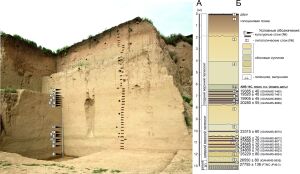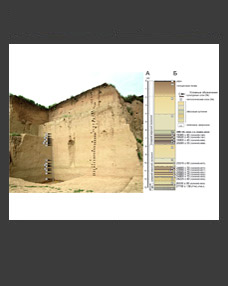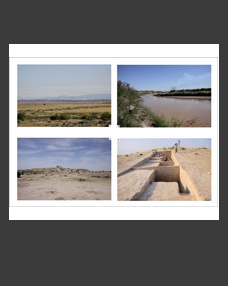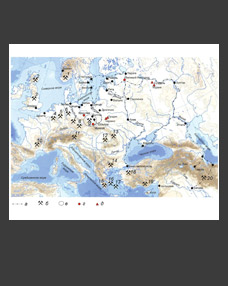Institute of Archaeology RAS, Moscow, Russia
*E-mail: dmit.ozherelyev@gmail.com
Keywords: Tien Shan, Rakhat site, lithic industry, microliths, Upper Palaeolithic.
Active archaeological work of recent years in the foothills of the Northern Tien Shan (Trans-Ili Alatau) have revealed over ten Upper Palaeolithic sites here. The Rakhat site occupies a special place in this series. In 2018–2023, the entire loess layer of the site, 13 m thick, was uncovered by excavation over the area of ~ 60 m2. A total of 16 cultural layers were found at Rakhat. Almost all of them contain hearths, fire pits, carbon spots or calcinations. All cultural layers represent relatively short-term, probably seasonal, visits of residents. The total collection numbers 9267 lithic finds. The layers are grouped into three packs: layer 12 – end of the Early Upper Palaeolithic (~28,000–27,000 14C yr BP); layers 11, 10, 9, 8/1, 8/2, 7, 6 – middle Upper Palaeolithic (~25,200–23,300 14C yr BP); layers 5, 4/4, 4/3, 4/2, 4/1, 3, 2, 1 – beginning of the late Upper Palaeolithic (~20,300–19,300 14C yr BP). Between the last two packs, a hiatus was noted, associated with one of the unfavorable stages of the last glacial maximum (LGM). The site provides an opportunity to traces the emergence and transformation of various cultural complexes with characteristic lithic industries. This process took place under the conditions of climatic changes of the LGM period. Based on the site materials, on the one hand, the specific character of the Upper Palaeolithic cultural complexes was revealed, on the other hand, it was determined that the development of the Upper Palaeolithic of the Northern Tien Shan took place within a single cultural vector, characteristic of the western part of Eurasia.








